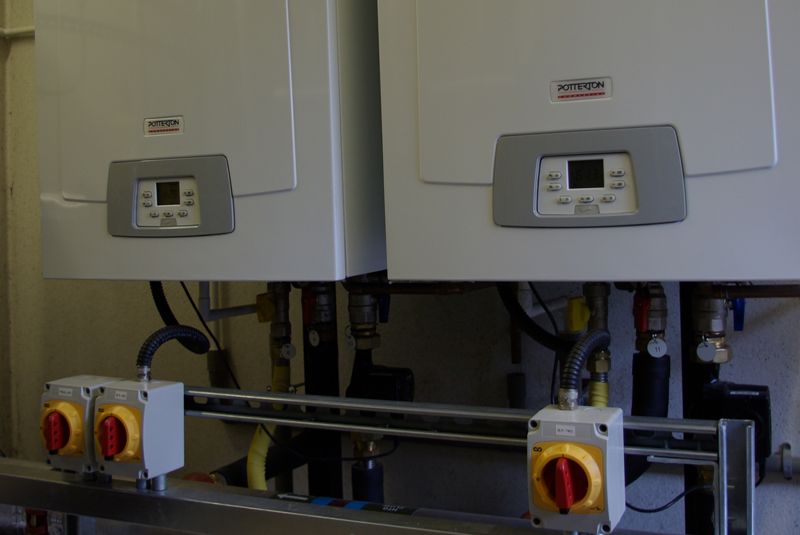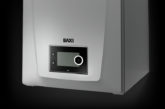
In line with the Ecodesign Directive for space heaters and combi space heaters, when an existing light commercial boiler comes to the end of its working life or needs upgrading, it will now have to be replaced with a high efficiency, condensing model. Neville Small, Sales Director at Potterton Commercial, explains the impact this could have in terms of siting boilers and flue terminals.
While condensing boilers have been mandatory for dwellings since 2005, under Part L2 of the Building Regulations non-condensing boilers remained permissible for commercial installations, and were still being widely manufactured until the introduction of the Ecodesign Directive (commonly referred to as ErP) last September.
The Ecodesign Directive became mandatory for space heaters and combi space heaters of up to 400kW and, as it is unlikely that non-condensing boilers will meet the minimum efficiency performance criteria required to be legally placed on the EU market, when a non-condensing light commercial boiler needs to be replaced, a condensing boiler will need to be installed.
Replacing a non-condensing boiler and updating controls can save in the region of 25% on existing energy costs, meaning the owners and managers of light commercial buildings will benefit from reduced fuel bills.
However, because of the differences in technology, the move to condensing can have an impact on where the boiler and the flue terminal are sited, and both might need to be relocated. This means it is sometimes regarded as more difficult and (potentially) costly to install a condensing rather than a non-condensing boiler in replacement situations; something familiar to domestic installers.
A new flue system will always be required if a non-condensing boiler is being replaced with a condensing model as the flues are not compatible, and the flue for a condensing boiler must not be shared with any non-condensing appliance.
As a result of the technology used within a condensing boiler, careful consideration must be given to where the flue is sited, and it might not be possible to keep its original position. This is because the flue gases discharged from the flue terminal are cooler and less buoyant than those of a non-condensing boiler, and usually form a visible plume of water vapour. This needs to be carefully managed, as it might cause wetting of surfaces too close to the terminal, which could lead to water ingress and damp issues. The pluming can also be a nuisance to neighbouring properties and passers-by.
Fortunately, there are a number of ways to overcome the issues associated with pluming – and installers who have been fitting domestic condensing boilers since 2005 should be able to apply their knowledge and experience to commercial applications.
Extended flue kits can ensure that the flue is located in a suitable position, but must be installed in accordance with the standard IGE/UP/10 – Installation of flued gas appliances in industrial and commercial premises and the BS6644 specification for the installation and maintenance of gas fired hot water boilers. Each specific boiler will have a maximum permissible flue length that must be adhered to – further detail can be found in manufacturers’ installation manuals.
Plume displacement and deflector kits can also be used; these extend the flue terminal in order to essentially move the pluming to a point where it will be less noticeable and won’t cause a problem to neighbours or the general public.
If the position of the flue terminal becomes too restrictive, the boiler will need to be moved to a different location within the building.
Connection to a suitable drain is required to dispose of the condensate. Connections are typically to an internal stack pipe, a waste pipe, an external drain or gully, a rainwater hopper that is part of a combined system (i.e. a sewer that carries both rainwater and foul water) or a purpose made soakaway. Any external condensate pipework must be insulated to minimise the risk of freezing.
The move to condensing offers significant cost savings for the owners and operators of light commercial buildings – and now that non-condensing boilers of up to 400kW have been phased out through Ecodesign, this switch is accelerating. It is, however, important to be aware that differences in technology mean that existing boiler and flue locations might need to change, or flue and plume displacement kits might need to be incorporated.













